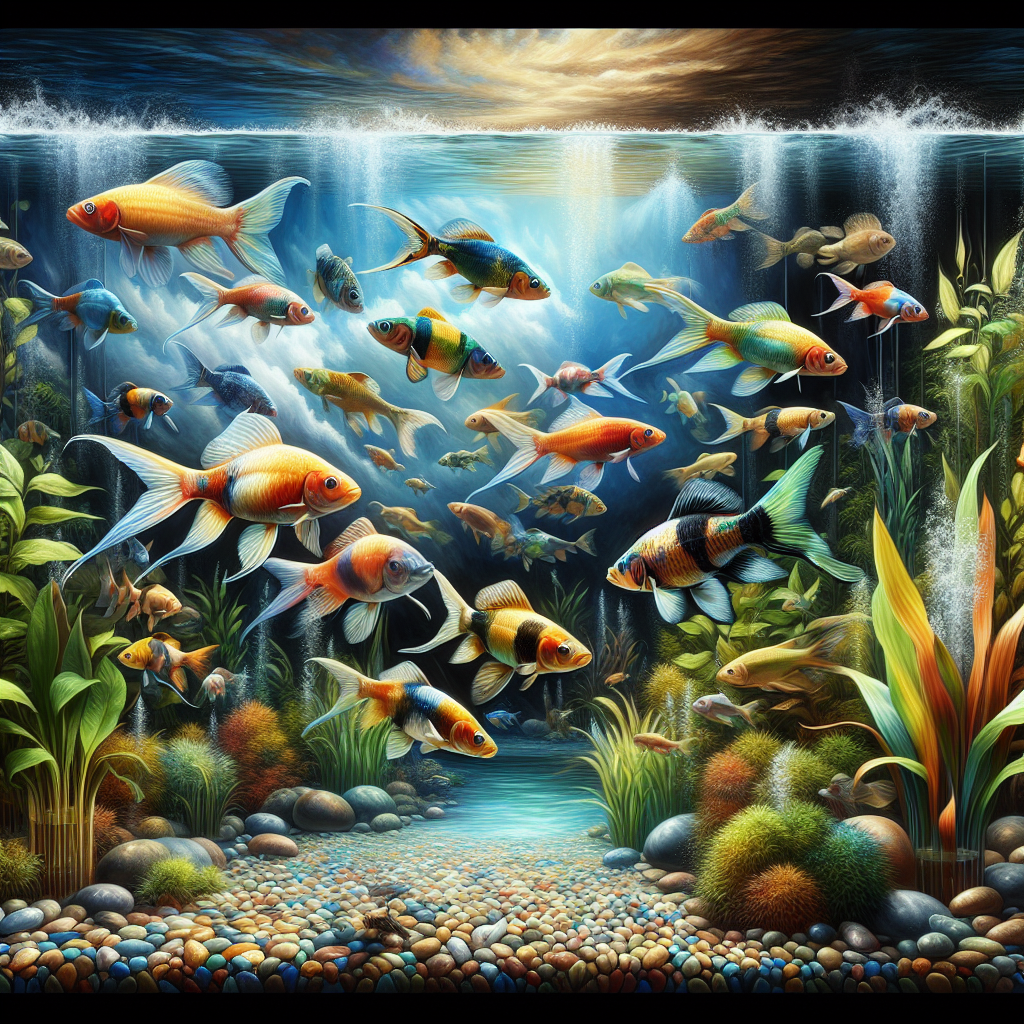
How to Care for Freshwater Fish: A Basic Guide for Beginners
Aug 22, 2024
4 min read
1
6
0
As an aquarium enthusiast, I understand the excitement and challenges that come with starting your freshwater fishkeeping journey. The world beneath the water's surface is one of vibrant colors, fascinating behaviors, and serene beauty. To ensure the well-being of your aquatic pets and create a harmonious underwater ecosystem, proper care and maintenance are essential. The following covers the basic fundamentals of freshwater fish care, offering valuable insights and practical tips to help you embark on this fulfilling hobby confidently.
Setting Up Your Aquarium
Before diving into the world of freshwater fishkeeping, it is crucial to set up a suitable habitat for your aquatic friends. There are a few things to keep in mind as you create a conducive environment for them to thrive:
Selecting the Right Tank : Choose an appropriately sized aquarium based on the number and size of fish you plan to keep. A tank size of at least 10-20 gallons is recommended by many in the industry as it provides a stable aquatic environment. With the rise of small-space living, a 2 gallon or 5 gallon tank may be ideal for RV's, apartments, tiny houses, bedrooms, and small office spaces. Because there is less water in these smaller sizes, the ecosystem of the water may change more than in a 10-20 gallon tank and it will be vital to perform weekly maintenance for your small aquarium.
Choosing Substrate and Decor : Opt for fine gravel or sand substrate and include plants, rocks, and caves to mimic a natural aquatic landscape. Decor not only enhances the aesthetic appeal of your aquarium but also provides hiding spots for fish and promotes less stress.

Water Quality and Maintenance
Maintaining pristine water conditions is vital for the health and well-being of your freshwater fish. Here are some essential steps to ensure optimal water quality:
Water Filtration : Invest in a quality filtration system to remove debris, chemicals, and harmful substances from the water. Regularly clean or replace filter media to prevent the buildup of waste. The filter provided in our 2-gallon tank kit functions best when kept on a weekly cleaning schedule. Rinsing the sponge off in cold, chlorine-free water is enough to remove debris and waste from the filter. The bio sponge material promotes the growth of healthy bacteria that assist in breaking down waste as well.
Water Parameters : Monitor water parameters such as temperature, pH levels, ammonia, nitrites, and nitrates regularly. Use a reliable test kit to ensure that these parameters are within the ideal range for your fish species. While test strips are popular, they are not the most reliable. A liquid test kit is advised for accurate level readings. (Find a liquid test kit here: https://www.amazon.com/API-FRESHWATER-800-Test-Freshwater-Aquarium/dp/B000255NCI)
Fish Selection and Acclimatization
Choosing the right fish for your aquarium and acclimatizing them properly are crucial steps in freshwater fish care. Before adding fish to your aquarium:
Research Fish Species : Prioritize species that are suitable for beginners, such as betas, tetras, guppies, and platies. Consider the adult size, temperament, and compatibility of fish before adding them to your tank.
Acclimate the Fish : Float the sealed fish bag in your aquarium for about 15-20 minutes to allow the water temperature to equalize. Then pour the water in the bag over a net and place the fish into the aquarium (not the bag water).
Feeding and Nutrition
A well-balanced diet is essential for the health and vitality of your freshwater fish. Here are some feeding tips to ensure proper nutrition:
Varied Diet : Offer a diverse diet that includes high-quality flake, pellet, and frozen foods to meet the nutritional needs of different fish species. Some of the best all-around choices include brine shrimp and blood worms (frozen, dry-freezed or live)
Feeding Frequency : Feed your fish small amounts 2-3 times a day, ensuring they consume all the food within a few minutes. Avoid overfeeding, as it can lead to water quality issues. If you have food left uneaten in the tank, it will rot and cause harmful bacteria to grow and pollute the aquarium water.
Health and Disease Prevention
Maintaining a healthy environment in your aquarium can prevent common fish diseases and ensure your fish lead a long and happy life. Here are some tips to keep your fish healthy:
Quarantine New Fish : Always quarantine new fish for at least 2 weeks before introducing them to your main tank. This helps prevent the spread of diseases to your existing fish population. A small quarantine tank also makes the treatment of issues easier to manage and monitor.
Regular Water Changes : Perform regular water changes to remove accumulated waste and maintain optimal water quality. Aim to replace 10-20% of the water every 1-2 weeks depending on your tank size and fish species. For our 2-gallon tank, we recommend a weekly water change.
By following these essential guidelines and tips, you can provide a safe and thriving habitat for your freshwater fish, fostering their health and well-being. Remember, patience and dedication are key virtues in the world of fishkeeping, and the rewards of a beautiful, healthy aquarium are well worth the effort!
Let's dive into the colorful world of freshwater fish and create a vibrant aquatic oasis together!
Aquarium Issues or Questions?